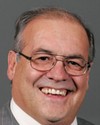Merci, monsieur le président.
As President of Thales Canada, I welcome the opportunity to appear before the committee today to speak on the issue of high-speed rail in Canada and more specifically on what we would be able to provide in the way of high-speed train control systems.
I will be sharing my time with Kevin Fitzgerald, our vice-president of business development within the rail signalling division of our company in Toronto. I will start first with a few words about our company.
Thales is a world leader for electronic systems, serving the fields of defence, aerospace, and security with world-leading and dual-use technologies. Similarly, in Canada, Thales Canada is organized into three business lines: one for defence, based in Ottawa and Montreal; one for avionics, based in Montreal; and one for rail signalling, based in Toronto. We employ 1,350 people and our sales last year were over $400 million Canadian.
As a worldwide company, Thales Group's sales last year exceeded $18 billion, and we employed 68,000 people in more than 50 countries. Out of this number, 22,000 people and 19% of the revenues were directed to R and D. This R and D capacity and focus were exactly what led our company to establish our facility in Toronto in the seventies, when the province decided to encourage the development of modern urban transit systems.
Today, I am proud to say that our Toronto operation is a world leader in rail signalling and an international centre of excellence for our group, the Thales Group. From Toronto, we are providing our customers worldwide with turnkey solutions that increase performance and capacity while reducing operating, maintenance, and infrastructure costs.
In Canada, our systems are in service in Vancouver for the SkyTrain line and the Canada line, and in Toronto for the Scarborough rapid transit line. As an exporter from Canada, we have delivered major projects in Hong Kong, Shanghai, Beijing, London, Kuala Lumpur, Seoul, and New York City, and we are now developing a system for Paris, just to mention some of them.
On the issue of high-speed rail, Thales has been a world leader through its European units and its systems are currently in use on lines in France, Spain, Greece, Germany, Finland, Turkey, Algeria and Mexico.
The construction of a high-speed railway system in Canada would have a very significant industrial impact for Thales Canada. The Thales Group has as a policy to ensure, when we have such a major project, the transfer of technology and knowledge from other business groups worldwide into a division—and in this case, into our division in Toronto—to provide the Canadian customer with a solution that will be not only the best solution the group can offer, but, most importantly, a Canadian solution.
I would like now to give the floor to Kevin, who will give you more technical information about our technology.




